/Our services (A to Z)/Adult’s speech and language therapy/Care home guidance/Food texture information/Level 7: Easy to chew food
Level 7: Easy to chew food
What is easy to chew?
Easy to chew is a part of level 7 (normal food) and refers to foods that are soft, with no need to worry about the size of the pieces.
This level is for people who can control how big their bites are and how fast they eat.
- The food should be soft and tender.
- It can be cut or separated easily with a fork or spoon.
- There’s no need to cut food into specific sizes.
Difficult foods
Some foods are very difficult to chew or swallow. These foods need to be avoided. Speak to your speech and language therapist about these.
- Mixed consistencies: Solid foods with thin liquid. For example, soup with food pieces, hard cereal with milk
- Hard foods: For example, nuts, boiled sweets
- Fibrous or stringy foods: For example, beans, pineapple, rhubarb
- Juicy food: Where juice separates off in the mouth, for example, watermelon, oranges
- Chewy foods: For example, chewy sweets, chewing gum, dried fruit
- Crispy foods: For example, crisps, flaky pastry, crispy bacon
- Crunchy foods: For example, raw carrot, raw apple, popcorn
- Crumbly foods: For example, biscuits, pie crust, dry cake.
- Pips, seeds and pith: For example, apple seeds, orange pith
- Skins and outer shells: For example, peas, grapes, beans with tough shells
- Skin, bone and gristle: For example, chicken skin, fish bones
- Round or long shaped foods: For example, sausages, grapes, sweets
- Sticky food: For example, marshmallows, some cheese, peanut butter
- Floppy food: For example, lettuce, cucumber, salad leaves
Easy to chew
- Foods should be soft and tender
- Foods can be cut or separated easily with the side of a fork or spoon
- Foods do not need to be cut or presented in any specific sized pieces
Please note: The following list provides examples of foods that are suitable for a level 7 easy to chew diet. It is not a meal plan. If you need more ideas or options, please talk to your speech and language therapist (SLT) or dietitian.
Breakfast
- Porridge
- Weetabix
- Cereals softened with milk
- Scrambled eggs/omelette
- Yoghurt
- Pancakes
- Boneless mackerel/kippers
- Avocado
- Lightly toasted toast (softened with butter/may need crusts removed)
Mains
- Fish pie, fish in sauce, fish cakes
- Casseroles or stew
- Shepherd’s pie or Cottage pie
- Corned beef hash
- Pasta-well cooked (for example, gnocchi, ravioli, lasagne, Bolognese, macaroni cheese)
- Moussaka
- Curries or dahl
- Risotto
- Omelette
- Meatballs
- Burger
- Sausages (skins removed)
- Noodles
- Omelette
- Jacket potato (insides only) with soft filling
- Sandwiches with soft filling (for example, tuna or egg mayo)
Vegetables
- Softly boiled vegetables without skins (for example, carrots, turnips, parsnips, sweet potato, cauliflower, courgettes, beetroot)
- Mushy peas
- Soft potatoes (mashed, boiled, roasted or chipped, if not too crispy and hard, add gravy or sauce if needed)
Sauces (to improve texture and flavour)
- Gravy
- White sauce, parsley sauce
- Mayonnaise, salad cream, sour cream
- Houmous, guacamole
- Tomato ketchup, brown sauce
Desserts and snacks
- Fresh or tinned soft fruit, for example, mango, strawberries, pears, peaches
- Stewed hard fruit with skins removed and excess juice drained
- Banana
- Chocolate mousse or smooth chocolate puddings
- Trifle
- Milk puddings (for example, rice pudding, semolina, tapioca)
- Cake or sponge pudding (may need cream or custard)


